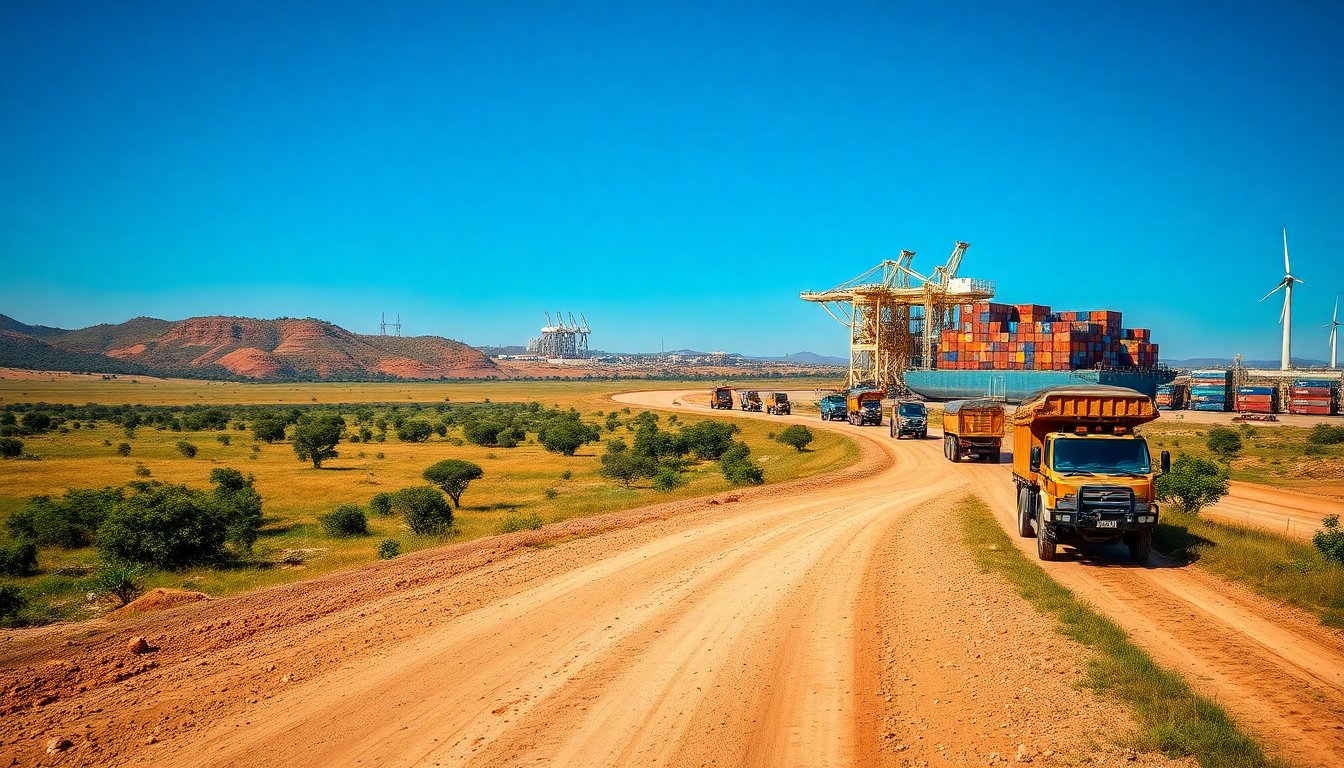Table of Contents
The geopolitical landscape in central-southern Africa is undergoing a significant transformation as major global powers engage in a strategic contest for control over essential logistical routes. This contest is not merely about transporting minerals; it reflects a deeper effort to secure long-term dominance over critical mineral supply chains necessary for the green energy transition. Understanding the vital infrastructure developments is essential for grasping the broader implications for global supply lines.
The Geopolitical Race for Logistics
As nations strive to enhance their strategic foothold in Africa, the race to establish and maintain logistical corridors has gained unprecedented importance. This development is not just a matter of moving minerals from point A to point B. Rather, it is a calculated move by global powers aiming to lessen their dependence on rivals and fortify their influence over the supply of critical minerals. This shift underscores how infrastructure investment can serve as a powerful tool for geopolitical strategy.
The Nacala Corridor serves as a prime example of this trend. This network connects the landlocked countries of Zambia and Malawi to Mozambique’s Port of Nacala, facilitating access to global markets. By extending to crucial urban centers, including Lusaka, approximately 200 kilometers from Kapiri Mposhi, the corridor enhances the region’s economic potential. The strategic importance of such infrastructure cannot be understated, as it positions these nations as key players in the global mineral supply chain.
The Nacala Corridor: A Case Study
Delving deeper into the Nacala Corridor reveals its multifaceted role in the region’s logistics framework. This corridor not only supports the movement of minerals but also fosters economic development in the connected countries. The improvement of this infrastructure directly correlates with increased trade opportunities, thereby enhancing local economies and livelihoods.
Moreover, the Nacala Corridor exemplifies how investments in transport infrastructure can lead to a ripple effect, stimulating various sectors such as agriculture, manufacturing, and tourism. This interconnectedness highlights the necessity for coordinated efforts among governments and investors to maximize the benefits derived from these logistical networks.
In addition, the corridor’s strategic location allows for greater access to international markets, which is crucial for countries looking to diversify their economic activities. This diversification not only strengthens their economic resilience but also diminishes reliance on traditional markets, fostering a more sustainable growth trajectory.
Implications for Global Supply Chains
The implications of these infrastructural developments extend beyond local economies; they resonate within global supply chains. As countries like China, the United States, and European nations invest in Africa’s infrastructure, they are simultaneously positioning themselves to secure access to critical minerals essential for technologies like electric batteries and renewable energy systems.
Such investments will likely shape the future of global supply chains, creating a more interconnected and interdependent economic landscape. As these nations race to establish dominance, the long-term implications for global trade dynamics and market stability become increasingly significant.
In conclusion, the evolving infrastructure landscape in central-southern Africa is not merely a regional development; it is a crucial element of the global supply chain for critical minerals. The strategic competition among global powers for control of these logistics routes will continue to influence economic strategies and geopolitical relations for years to come.


